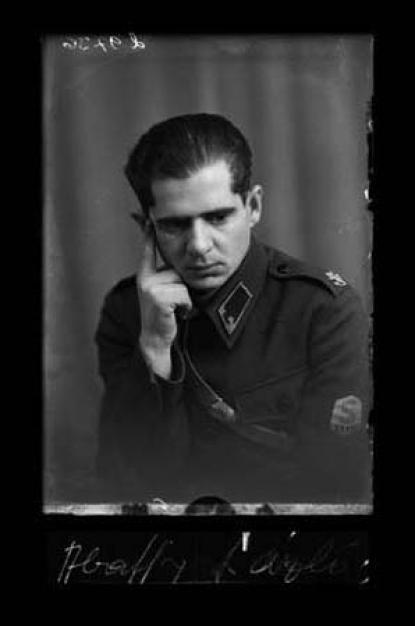2024. May 18. Saturday
Museum of Ethnography - Budapest
 |
Address: 1146, Budapest Dózsa György út - Ötvenhatosok tere
Phone number: (1) 473-2400
E-mail: info@neprajz.hu
Opening hours: Tue-Sun 10-18
|
The exhibition has closed for visitors.
2009.11.27. - 2010.03.21.
Museum tickets, service costs:
|
Individual ticket for adults
|
3000 HUF
|
|
|
Individual ticket for adults
(1 hour before closing)
|
1600 HUF
|
|
|
Group ticket for adults
(min. 10 people)
|
2600 HUF
|
/ capita
|
|
Individual ticket for students
|
1500 HUF
|
|
|
Individual ticket for students
(1 hour before closing)
|
800 HUF
|
|
|
Group ticket for students
(min. 10 people)
|
1300 HUF
|
/ capita
|
|
Individual ticket for pensioners
|
1500 HUF
|
|
|
Individual ticket for pensioners
(1 hour before closing)
|
800 HUF
|
|
|
Group ticket for pensioners
(min. 10 people)
|
1300 HUF
|
/ capita
|
|
Ticket for families
(2 adults + max. 3 children (up to 18 years old))
|
6300 HUF
|
/ family
|
|
Individual combined ticket for adults
(Zoom permanent exhibition + Ceramics Space + MÉTA)
|
1700 HUF
|
|
|
Individual combined ticket for adults
(We Have Arrived temporary exhibition + Ceramics Space + MÉTA)
|
2000 HUF
|
|
|
Individual combined ticket for students
(Zoom permanent exhibition + Ceramics Space + MÉTA)
|
850 HUF
|
|
|
Individual combined ticket for students
|
1000 HUF
|
|
|
Individual combined ticket for pensioners
(Zoom permanent exhibition + Ceramics Space + MÉTA)
|
850 HUF
|
|
|
Individual combined ticket for pensioners
(We Have Arrived temporary exhibition + Ceramics Space + MÉTA)
|
1000 HUF
|
|
|
Group walk ticket
(building walk, max. 15 people)
|
1500 HUF
|
/ capita
|
|
Group walk ticket for students
(Méta gallop, 10-20 people)
|
1200 HUF
|
/ capita
|
|
Group walk ticket
(building walk, in English, max. 15 people)
|
1800 HUF
|
/ capita
|
|
Group walk ticket for students
(Méta gallop, 10-20 people, in English)
|
1400 HUF
|
/ capita
|
|
Group guide
(10-20 people)
|
1000 HUF
|
/ capita
|
|
Group guide
(thematic, whit the curator of the exhibition, 5-20 people)
|
1300 HUF
|
/ capita
|
|
Group guide for students
(min. 10 people)
|
800 HUF
|
/ capita
|
|
Group guide
(10-20 people, in English)
|
1300 HUF
|
/ capita
|
|
Group guide
(thematic, whit the curator of the exhibition, in English, 5-20 people)
|
1690 HUF
|
/ capita
|
|
Group guide for students
(in English, 10-20 people)
|
1000 HUF
|
/ capita
|
|
Audio guide
|
1000 HUF
|
|
|
Photography
(for camera, camera-stand and telephoto lens)
|
700 HUF
|
What do foreigners think of Hungarians? What is the image we show of ourselves when we go abroad? And what is the image of hundreds of Hungarian soldiers who were ready to risk their lives for the freedom of related people. In the winter of 1939, the Red Army overnumbering the enemy attacked the defenceless Finland that did not agree to make a pact with Stalin. In consequence of this, a legion of volunteers of 342 soldiers was quickly set up to help the Finnish. The legion reached Lapua, in Finland taking a long way around. There, in Lapua, the winter drilling of the solders began without delay.

The events during the so-called ’Winter War’ are well-known in the interpretation of politicians, journalists and soldiers, but not told by civilians who were also actively part of the war. The Hungarian volunteers were ready to fight for the Finnish brothers. But what did local Finnish people have to say about this, the people who had to accommodate and feed the newcomers.
The organizers of the exhibition visited locals in Lapua in the summer of 2008 and 2009 to ask them about their stories of seventy years before. The stories and memories of people in Lapua are very interesting, though not from the point of view of military science. They gave interesting details about the peaceful days during war, the humanity of soldiers, as well as the relationship of the population and soldiers. A Finnish civilians and the Lotta did what they had to do: they treated the wounded, gave them food and drink, worked at the bullet factory or guarded the tower while trying to preserve something of their normal life. In reality, war stories are given new dimensions and meaning through these everyday stories.
The exhibition based on a portrait series presents memories preserved by Finnish civilians of Hungarian volunteers. This is the first time these portraits taken in Lapua are on display as they have been kept on glass negatives for 70 years. The negatives and documents prove that Hungarians loved visiting the local photo studio to have their photo taken alone, in groups, or sometimes wearing skies. An interesting feature of the exhibition is that the organizers managed to identify the people in the photos. The scanned copies of the photos with the signature of the volunteers from the quest book of the photo studio are on display together.

The events during the so-called ’Winter War’ are well-known in the interpretation of politicians, journalists and soldiers, but not told by civilians who were also actively part of the war. The Hungarian volunteers were ready to fight for the Finnish brothers. But what did local Finnish people have to say about this, the people who had to accommodate and feed the newcomers.
The organizers of the exhibition visited locals in Lapua in the summer of 2008 and 2009 to ask them about their stories of seventy years before. The stories and memories of people in Lapua are very interesting, though not from the point of view of military science. They gave interesting details about the peaceful days during war, the humanity of soldiers, as well as the relationship of the population and soldiers. A Finnish civilians and the Lotta did what they had to do: they treated the wounded, gave them food and drink, worked at the bullet factory or guarded the tower while trying to preserve something of their normal life. In reality, war stories are given new dimensions and meaning through these everyday stories.
The exhibition based on a portrait series presents memories preserved by Finnish civilians of Hungarian volunteers. This is the first time these portraits taken in Lapua are on display as they have been kept on glass negatives for 70 years. The negatives and documents prove that Hungarians loved visiting the local photo studio to have their photo taken alone, in groups, or sometimes wearing skies. An interesting feature of the exhibition is that the organizers managed to identify the people in the photos. The scanned copies of the photos with the signature of the volunteers from the quest book of the photo studio are on display together.
